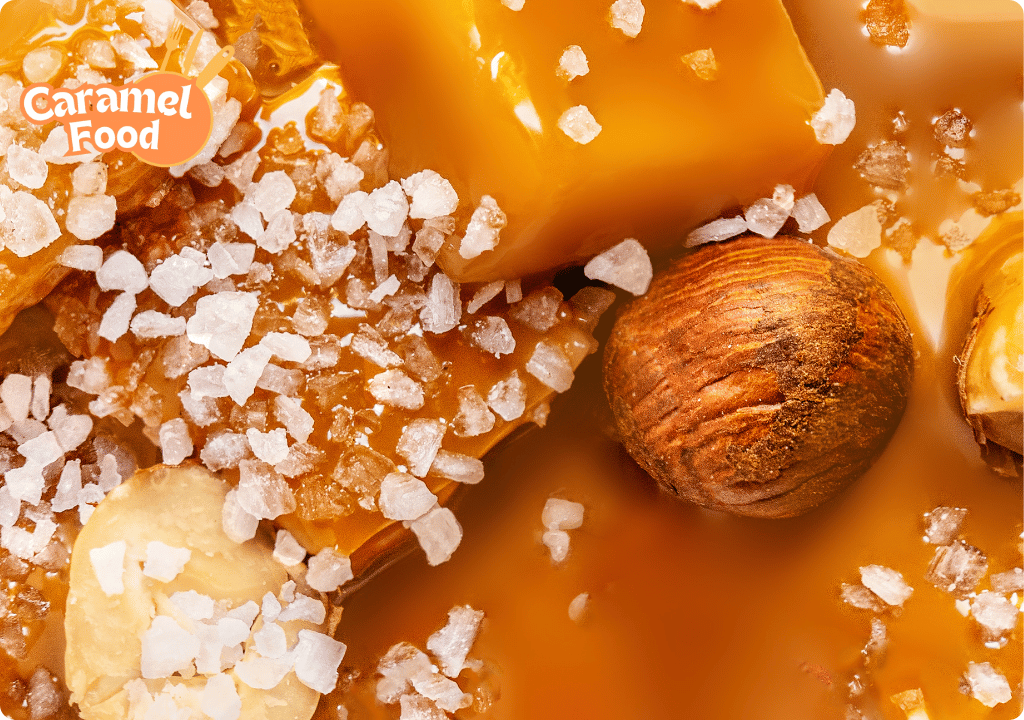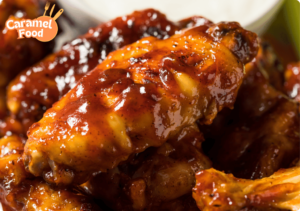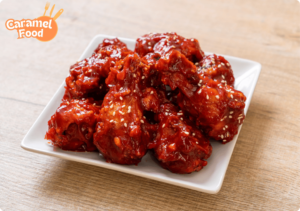In the realm of gourmet confections, few treats captivate the palate quite like the luxurious decadence of caramels. Among these, the Twisted Honey Caramels stand out as a sophisticated fusion of tradition and innovation, offering a unique twist on a classic delight. This article delves into the art and science behind crafting these exceptional confections, exploring both the intricacies of their preparation and the exquisite blend of flavors they deliver.
The Allure of Caramel
Caramel, a culinary staple, is a product of the Maillard reaction, a chemical process that imbues sugar with complex flavors and a rich, golden hue. Its versatility as a confectionery ingredient is unparalleled, serving as the foundation for countless desserts and sweets. The allure of caramel lies in its ability to transform simple ingredients into a confection that is both comforting and indulgent.
Historical Background of Caramel
Caramel’s history is as rich as its flavor, with origins tracing back to the early days of sugar production. The process of caramelization likely began as an accidental discovery, leading to its widespread use in various cultures. As sugar became more accessible, the art of caramel-making evolved, with each region adding its unique twist, ranging from creamy to hard caramels.
Caramel’s Versatility in Desserts
Caramel is more than just a standalone treat; it is a cornerstone in the dessert world. From drizzling over ice cream to layering between cakes, its applications are vast. The beauty of caramel lies in its adaptability, able to enhance and blend with diverse ingredients. Whether paired with chocolate, nuts, or fruits, caramel adds depth and richness to any dessert.
The Science Behind Caramelization
Understanding the science of caramelization is key to mastering its art. The Maillard reaction, coupled with sugar’s thermal decomposition, gives caramel its distinctive flavor and color. This process requires precision, as temperature and timing are crucial. A slight variation can lead to a burnt or grainy texture, making the art of caramelization both challenging and rewarding.
The Emergence of Twisted Honey Caramels
Twisted Honey Caramels are a contemporary iteration of traditional caramels, distinguished by the incorporation of honey, which adds a nuanced depth of flavor. This innovation not only enhances the taste profile but also introduces a natural sweetness that complements the caramel’s inherent richness. The result is a confection that is both familiar and refreshingly novel.
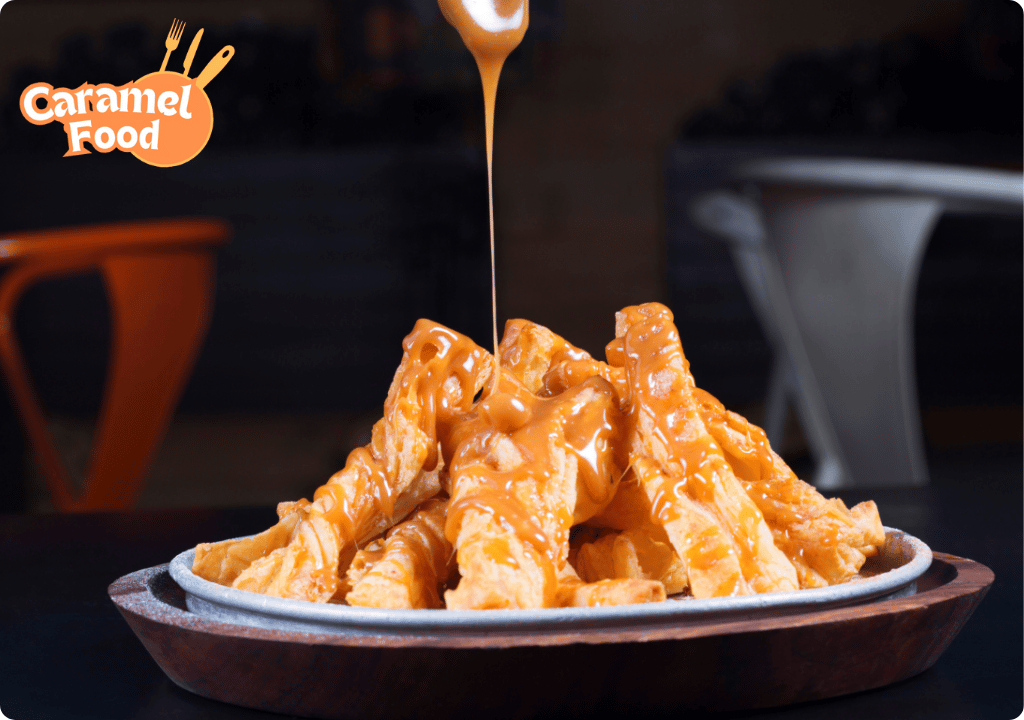
The Inspiration Behind the Twist
The journey to create Twisted Honey Caramels began with a desire to innovate while honoring tradition. By integrating honey, a beloved natural sweetener, into the caramel matrix, confectioners sought to create a product that stands out. This choice was inspired by honey’s historic culinary use and its ability to infuse warmth and complexity into any dish.
The Unique Flavor Profile
The incorporation of honey into caramels creates a symphony of flavors that dance on the palate. Honey’s floral undertones blend seamlessly with the deep, buttery notes of caramel, resulting in a rich, layered taste experience. This fusion introduces a new dimension to caramels, offering consumers a taste that is both comforting and intriguing.
Market Reception and Popularity
Since their introduction, Twisted Honey Caramels have captured the hearts of caramel enthusiasts and novices alike. Their unique flavor profile and artisanal quality have led to a surge in popularity, making them a favorite in gourmet shops and culinary festivals. Consumers appreciate their balance of tradition and innovation, a testament to their widespread appeal.
Crafting the Perfect Caramel
Creating Twisted Honey Caramels requires precision and attention to detail. The process begins with the careful selection of ingredients, each contributing to the overall flavor and texture of the final product.
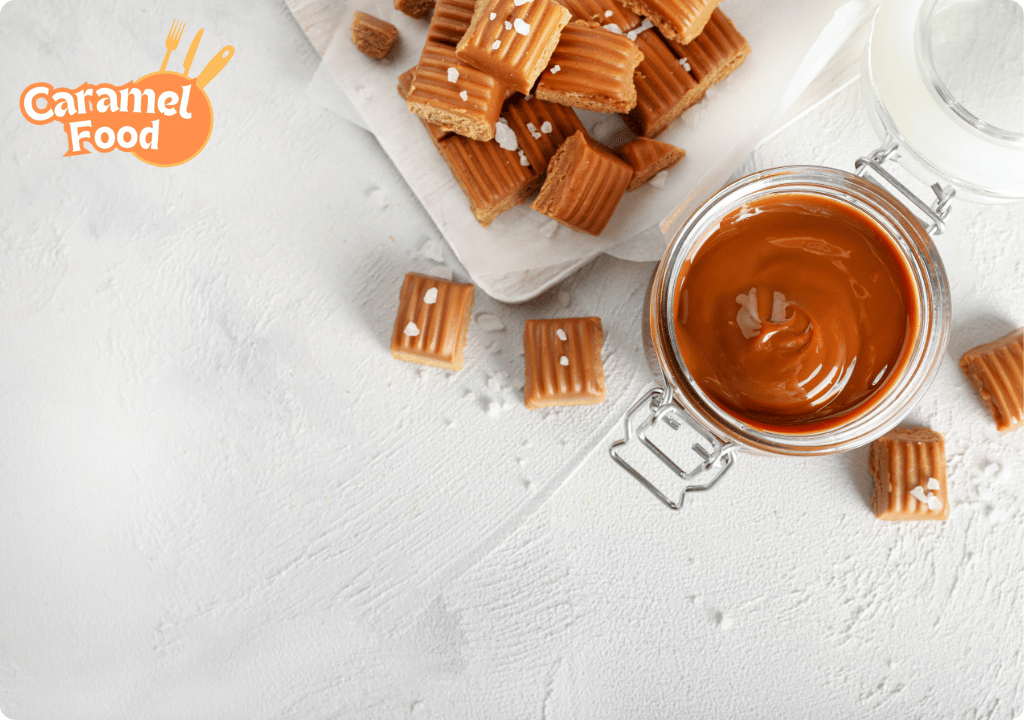
Ingredients and Their Roles
- Sugar: The primary ingredient, sugar is responsible for the caramelization process that gives caramels their signature flavor and color. The choice of sugar, be it white, brown, or raw, can influence the final taste, offering different depths and tones.
- Honey: Acting as both a sweetener and a flavor enhancer, honey infuses the caramel with floral notes and a subtle complexity. The type of honey used, such as clover or wildflower, can further tailor the flavor profile, making each batch unique.
- Butter: Provides richness and a smooth, creamy texture. The quality of butter is crucial, with higher-fat content yielding creamier caramels. Its role is pivotal in binding the ingredients, ensuring a luscious mouthfeel.
- Cream: Essential for achieving the desired consistency, cream ensures that the caramels remain soft and chewy. The balance between cream and sugar dictates the texture, with more cream leading to softer caramels.
- Salt: A pinch of salt balances the sweetness and enhances the overall flavor profile. The addition of sea or Himalayan salt can introduce subtle mineral notes, elevating the caramel’s taste.
The Methodology
- Caramelization: Begin by melting sugar over medium heat, allowing it to transition from granular to liquid form. This stage is critical, requiring constant vigilance to prevent burning. The transformation from white to golden brown is a visual cue to the sugar’s readiness.
- Incorporating Honey: Once the sugar reaches a deep amber color, carefully introduce the honey. This step requires precision, as the mixture can bubble vigorously. The timing of honey addition is crucial, as it impacts the final flavor and texture.
- Adding Butter and Cream: Gradually incorporate butter and cream, stirring continuously to achieve a homogeneous blend. This step is pivotal in developing the caramel’s characteristic smoothness. A consistent stir prevents the formation of lumps, ensuring a uniform consistency.
- Final Adjustments: Finally, add a pinch of salt to enhance the flavors. Allow the mixture to cool slightly before pouring into molds or a prepared pan. This cooling period is essential for setting the caramel, providing the perfect chewiness.
Troubleshooting Common Issues
Creating caramels can present challenges, but understanding potential pitfalls can lead to success. Common issues include graininess, which is often due to crystallization. This can be mitigated by ensuring all sugar is fully dissolved and using ingredients like honey to inhibit crystal formation. Burnt flavors result from overheating, emphasizing the importance of temperature control. Patience and practice are the keys to mastering caramel-making.
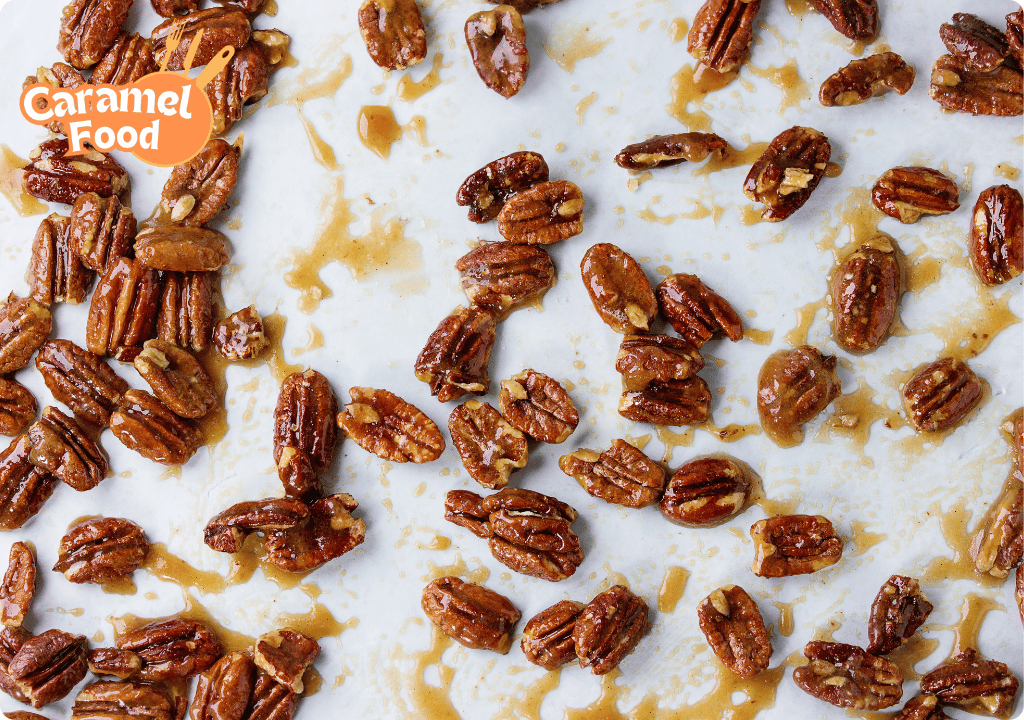
The Science Behind the Sweetness
The incorporation of honey into caramel not only alters the flavor but also impacts the molecular structure of the confection. Honey, being an invert sugar, prevents crystallization, resulting in a smoother texture and a more stable product. This scientific nuance is crucial for achieving the perfect consistency in Twisted Honey Caramels.
The Chemistry of Invert Sugars
Invert sugars, such as honey, play a significant role in candy-making. They disrupt the regular crystal formation of sucrose, leading to a smoother texture. This chemical property is vital in the creation of soft, chewy caramels, preventing the grainy texture that can occur with traditional sugar solutions.
The Role of Temperature in Caramel Consistency
Temperature control is paramount in caramel production. The precise heating and cooling phases influence the final texture and flavor. Too high a temperature can result in hard, brittle caramels, while too low can leave them overly soft. Understanding the temperature’s impact on sugar molecules helps craft the perfect caramel consistency.
The Impact of Honey’s Natural Acidity
Honey’s natural acidity contributes to the overall flavor complexity of Twisted Honey Caramels. It not only enhances the caramel’s depth but also acts as a natural preservative, extending the shelf life of the confection. This acidity balances the sweetness, ensuring a well-rounded taste experience.
Balancing Flavors
The art of crafting Twisted Honey Caramels lies in achieving a harmonious balance between sweetness and depth. Honey’s natural acidity and aromatic compounds contribute layers of flavor that complement the caramelized sugar, creating a multifaceted taste experience.
The Dance of Sweetness and Salt
A delicate dance between sweetness and salt enhances the caramel’s flavor profile. The subtle saltiness tempers the rich sweetness, bringing out the nuanced flavors of honey and butter. This balance is crucial, as it ensures the caramels are not overwhelmingly sweet but instead offer a complex taste journey.
Enhancing Depth with Botanical Notes
Incorporating botanical elements, such as vanilla or cinnamon, can elevate the flavor complexity of Twisted Honey Caramels. These additions complement the floral notes of honey, adding layers of warmth and depth. Experimenting with spices allows for personalized flavor profiles, catering to diverse palates.
The Importance of Mouthfeel
Beyond flavor, the mouthfeel of caramels significantly influences the tasting experience. The smooth, creamy texture is achieved through the careful balance of ingredients and precise cooking techniques. The satisfying chew of a well-crafted caramel is a testament to its artisanal quality, enhancing the overall enjoyment.
Twisted Honey Caramels: A Culinary Innovation
The innovation of Twisted Honey Caramels extends beyond their unique flavor profile. These confections represent a modern approach to traditional candy-making, showcasing the potential for creativity within the realm of classic desserts.
Pairing Suggestions
Twisted Honey Caramels pair beautifully with a variety of flavors and beverages. Consider enjoying them alongside:
- Cheese: The creamy texture and complex flavors of cheese complement the sweetness of the caramels. Soft cheeses like Brie or Camembert offer a luxurious pairing, while sharp cheddars provide a delightful contrast.
- Wine: A fine dessert wine accentuates the caramel’s richness while balancing the honey’s floral notes. Port or Sauternes are excellent choices, enhancing the caramel’s depth and complexity.
- Coffee: The robust bitterness of coffee provides a delightful contrast to the caramels’ sweetness. Espresso, with its intense flavor, highlights the caramel’s buttery notes, creating a harmonious pairing.
Serving and Presentation
Presentation plays a vital role in the enjoyment of gourmet confections. When serving Twisted Honey Caramels, consider arranging them on a decorative platter or packaging them elegantly for gift-giving. Their visual appeal is matched only by their delectable taste.
Creative Packaging Ideas
Packaging Twisted Honey Caramels creatively enhances their appeal. Consider using elegant boxes or wrapping them individually in decorative paper. Adding a personal touch, such as a handwritten note or a ribbon, can elevate the gift, making it memorable for recipients.
Plating for Special Occasions
For special occasions, plating Twisted Honey Caramels with complementary accompaniments can enhance the dining experience. Pairing with fresh fruits or nuts creates a visually stunning display. This attention to detail not only pleases the eye but also enriches the flavor experience.
The Art of Gift-Giving
Twisted Honey Caramels make for exquisite gifts, embodying both luxury and thoughtfulness. Presenting them in a carefully curated gift basket with other gourmet treats can leave a lasting impression. Their artisanal quality and unique flavor make them a cherished gift for any occasion.
Conclusion: The Art of Caramel Reinvented
Twisted Honey Caramels exemplify the perfect marriage of tradition and innovation, offering a delectable treat that tantalizes the senses. By embracing both the art and science of confectionery, these caramels provide a unique and memorable experience for gourmet enthusiasts and casual candy lovers alike. Whether enjoyed as a standalone indulgence or paired with complementary flavors, Twisted Honey Caramels are a testament to the endless possibilities within the world of sweets.
In summary, Twisted Honey Caramels are not merely a dessert but an embodiment of culinary creativity and expertise. Their intricate preparation process, combined with a thoughtful selection of ingredients, results in a confection that is both sophisticated and satisfying. For those seeking to explore the depths of caramel artistry, Twisted Honey Caramels are an exquisite choice.
Celebrating Craftsmanship
The meticulous craftsmanship involved in making Twisted Honey Caramels is a celebration of culinary artistry. Each step in the process, from ingredient selection to final presentation, reflects a dedication to quality and innovation. This attention to detail is what sets these caramels apart, making them a true gourmet delight.
The Future of Caramel Innovations
As the culinary world continues to evolve, Twisted Honey Caramels represent a glimpse into the future of candy-making. Their success inspires further experimentation with flavors and techniques, pushing the boundaries of traditional confections. This spirit of innovation promises exciting new developments in the realm of sweets.
Inviting Exploration and Enjoyment
Twisted Honey Caramels invite exploration and enjoyment, encouraging consumers to savor each bite mindfully. Their complex flavors and textures offer a sensory journey, appealing to both taste and nostalgia. This invitation to indulge in the art of caramel is a reminder of the simple pleasures that gourmet confections can provide.
